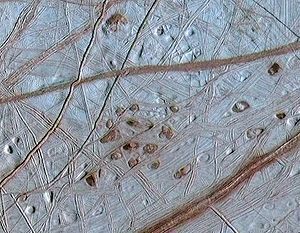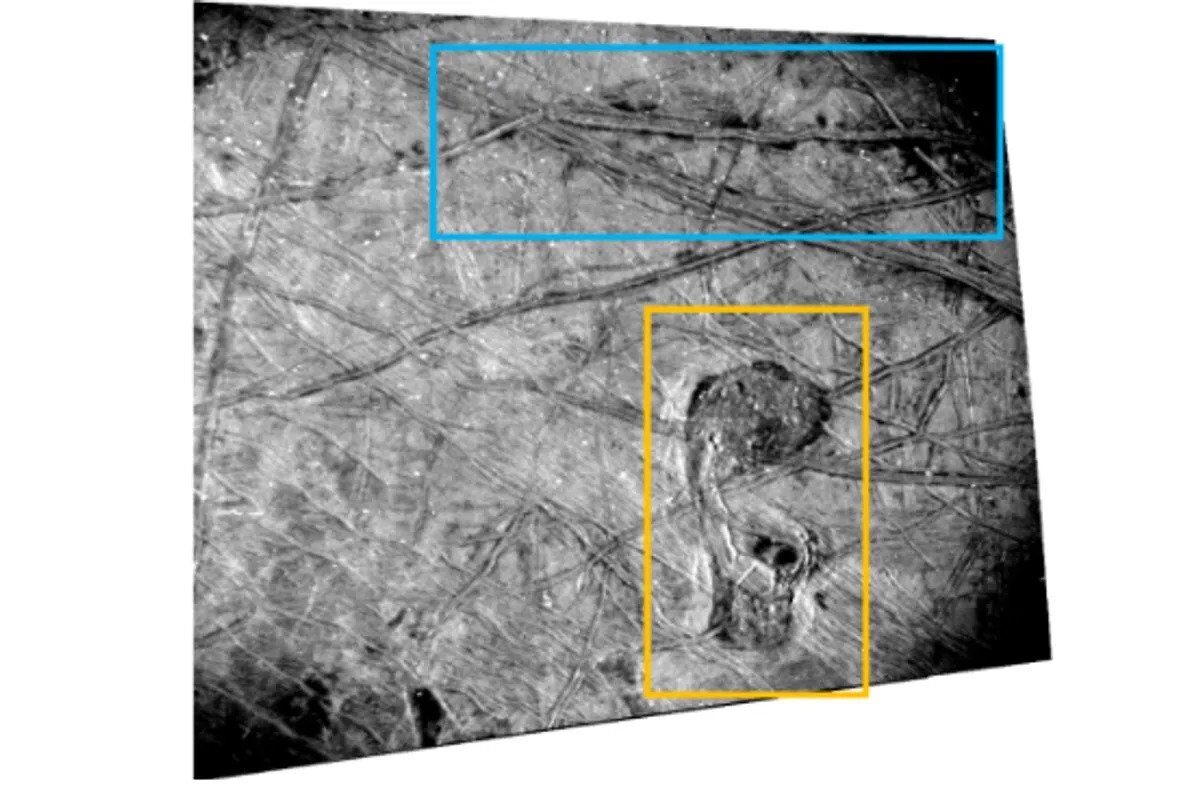News
NASA has detected movement under the ice crust of Europe. Photo
NASA's Juno spacecraft has discovered footprints under the ice covering the surface of Europa, a moon of Jupiter. These tracks may be a manifestation of plume activity.
A giant ocean hiding beneath Europa's icy surface has long been the subject of scientific debate. The new Juno data could allow future missions to sample the inner ocean without having to land, IFLScience writes.
Almost two years have passed since Juno came as close as possible to Europe, but its data is still being analyzed. Although the spacecraft has been orbiting Jupiter since 2016, the five images taken on September 29, 2022, were the first major achievement since the last visit of the Galileo spacecraft in 2000.
Europa's surface is the smoothest object in the solar system due to the influence of its interior ocean. But Juno spotted several troughs with steep walls 20 to 50 kilometers wide and fault patterns that were thought to be signs of "true polar wander."
"True polar wandering occurs when Europe's ice shell separates from its rocky interior. This leads to high levels of stress on the shell and predictable fracture patterns," Dr. Candy Hansen of the Planetary Science Institute said in a statement.
The idea behind true polar wander is that the shell that lies on top of Europa's inner ocean rotates at a different speed than the rest of the moon. It is believed that the water below is moving and pulling the shell along, and the currents in the ocean affect the movement of the shell.
The currents, in turn, are likely caused by the heating of Europa's rocky core as the gravitational pull of Jupiter and its larger moons turns Europa into a giant, tense ball.
The interaction between the ocean and ice can stretch and compress the surface, forming cracks and ridges.
"These features hint at modern surface activity and the presence of subsurface liquid water on Europa," said Heidi Becker of the Jet Propulsion Laboratory.
The ridge formation on the surface of Europa is called the Platypus because of its shape. Scientists believe that this formation may be caused by pockets of salt water that have partially penetrated the ice shell.
Only verified information is available on the OBOZ.UA Telegram channel and Viber. Do not fall for fakes!






























